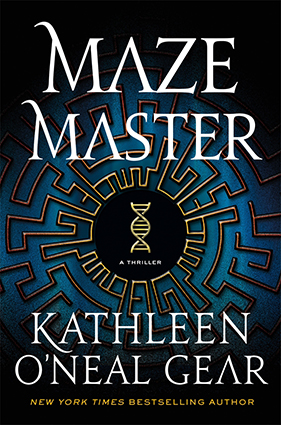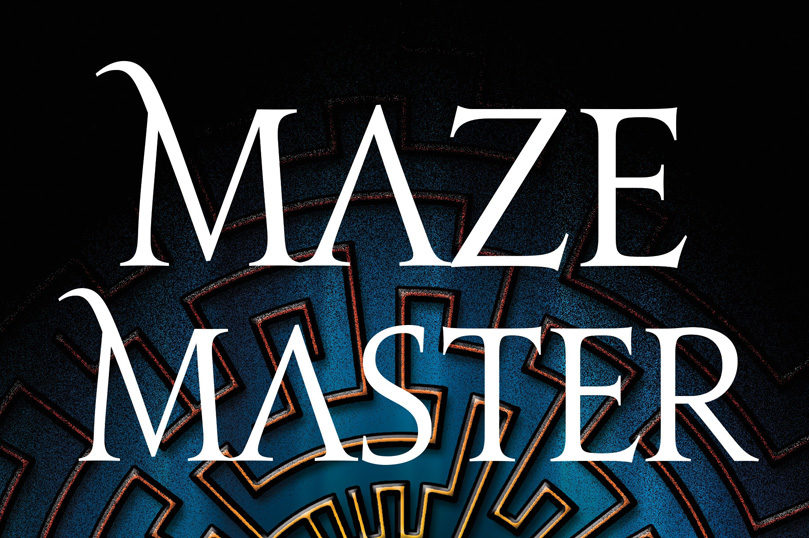 Written by Kathleen O’Neal Gear
Written by Kathleen O’Neal Gear
A reporter once told me that our library could pass for a crime lab. Skulls detailing the history of humanity line the shelves and perch on pedestals, beginning with a diminutive acrylic cast of Australopithecus afarensis, running through a variety of Homo erectus examples, then on to the impressive skulls of Neandertals, who had larger brains than modern humans, and finally through a selection of prehistoric human skulls from cultures around the world. The neatly defined sections of books beneath the skulls are devoted to the chronology of human evolution. As anthropologists, my husband Michael and I are fascinated by who we are how we came to be.
The Genomics Age has significantly changed the way we explore that question.
Probably one of the most surprising revelations of the full mapping of the human genome, in 2003, was that the human body is filled with shards of ancient retroviruses. In fact, about 8 to 9% of our DNA is composed of viral fragments, and several were passed down to us by our archaic ancestors.
When modern humans left Africa and traveled to Europe and Asia around 100,000 years ago, they met and interbred with at least three archaic species, Neandertals, Denisovans, and an third unknown species. The result is that modern non-African populations possess genes from these three species. And, like passing on a gene for eye color, those ancient ancestors gave us a recently active retrovirus: Human Endogenous Retrovirus K. 50,000 years ago, HERV-K’s infectious power was impressive, but over thousands of generations these molecular fossils in our DNA have changed so much that when first discovered it was believed they were just interesting curiosities in our genome. Extinct. Broken. Unable to replicate.
However, on April 23, 2015, Dr. Joanna Wysocka of Stanford University told the New York Times that it seemed HERV-K guided the development of the human embryo. In the article, “Ancient Viruses, Once Foes, May Now Serve as Friends,” she pointed out that, for a few days, embryonic cells furiously make HERV-K. They stop making HERV-K the instant the embryo implants in the uterus. Why? Has our genome tamed an ancient enemy and turned it into a helpful friend? Or is HERV-K just a “very successful parasite”? For example, Wysocka tried infecting embryonic cells with influenza, and those producing HERV-K were better able to resist the flu infection.
On the other hand, Dr. John Coffin who studies HERV-K at Tufts University School of Medicine has documented high levels of HERV-K in several cancers, multiple sclerosis, schizophrenia, and possibly neurodegenerative illnesses like Lou Gehrig’s disease.
So, is HERV-K a helpful friend guiding our evolutionary course through time, or the Loch Ness Monster of the human genome?
Finally, in 2016, Coffin, et al reported in the Proceedings of the National Academy of Sciences that they had found the first intact virus in the human genome. Coffin said, “This one looks like it is capable of making infectious virus, which would be very exciting if true, as it would allow us to study a viral epidemic that took place long ago.”
Since genetic mutation is the toolbox of evolution, having a window into long past viral infections will also give us clues as to how HERV-K has mutated over time, and how those mutations have progressively altered the blueprint of our species. Perhaps it will even allow us to project HERV-K’s next likely mutation.
That possibility was the inspiration for my upcoming novel Maze Master. In the story, Dr. James Hakari is obsessed with documenting the molecular history of HERV-K and determining the next logical mutation. Will it be adaptive, helping us on the human journey or a Trojan horse that turns out to be the instrument of our extinction? When a devastating new pandemic breaks out, Hakari disappears, and governments around the world wonder if he created the virus or just predicted it. Can he stop it? They call on his former student, Anna Asher, to find him and bring him in. But Hakari is a genius, a magician of viral geometry, finding him with the world collapsing around her is not going to be easy…
I hope you enjoy this anthropological thriller.
Order Your Copy
Follow Kathleen O’Neal Gear online on Twitter (@GearBooks), Facebook, and her website.











